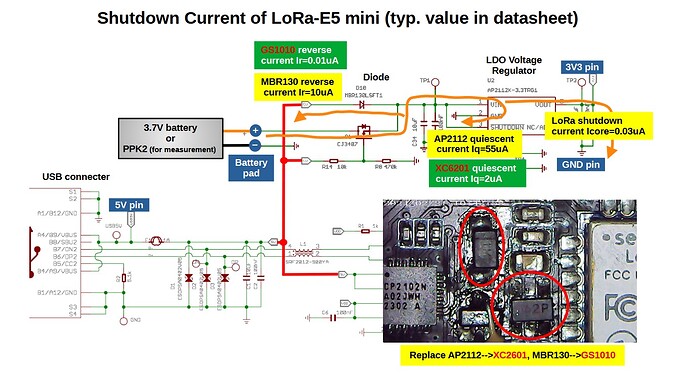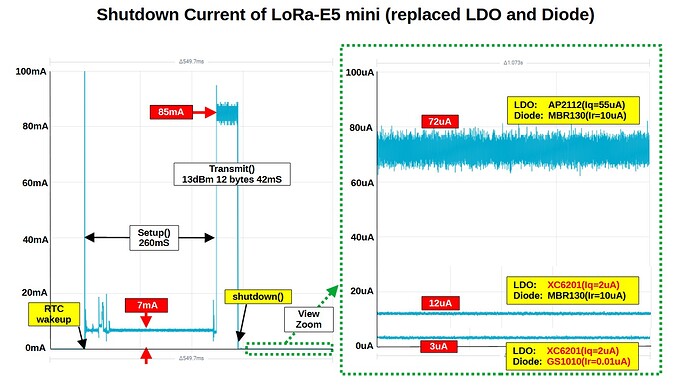The LoRa-E5-(LE) mini uses an AP2112 3.3V LDO with a high quiescent current of 55uA and a MBR130 Schottky barrier diode with a high reverse current of 10uA. These two components account for most of the 72uA shutdown current. In particular, the reverse current of the diode is very sensitive to temperature; for example, it can easily double when the room temperature changes by 10°C.
To reduce the shutdown current, the LDOs and diodes were replaced. Considering footprint and availability, I selected the XC2601, an LDO with a small quiescent current of 2uA, and the GS1010, a silicon diode with negligible reverse current. LDOs in particular are 0.9mm pitch surface-mount components, but even I, living in a 2.54mm pitch world, could replace them using an ordinary soldering iron as long as I used a magnifying glass.
As a result, the shutdown current, which was initially 72uA, was greatly improved to 12uA by replacing the LDO, and to 3uA by replacing the diode as well. According to the STM32WLE5JC datasheet, the shutdown current is 31 nA, so the 3 uA shutdown current obtained here seems to be almost the limit value.
The PPK2 was used to measure current and 3.7 V was supplied from the battery pad. Room temperature was kept at 25°C where possible.
Sketch used for the experiment.
STM32WL_TX_ShutdownCurrent.zip (1.6 KB)

